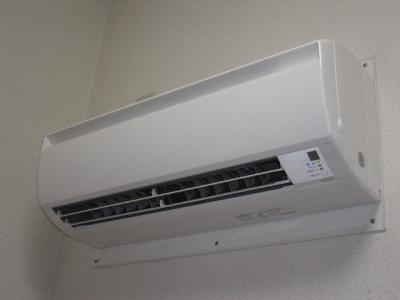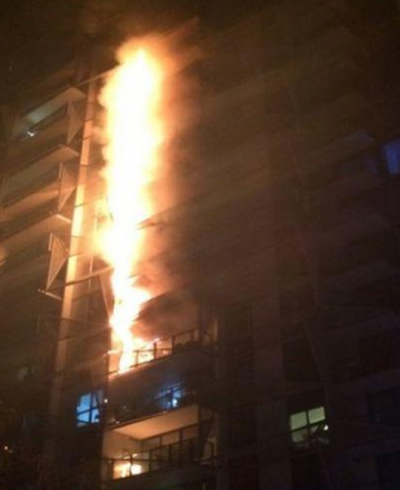Victims suffer as combustible cladding crisis rages on
This blogpost is by Simon Lockrey, who is a senior lecturer in industrial design at RMIT University, and an owner of property with non-compliant cladding. Simon reflects on how it came to be that principally consumers (apartment owners) in Victoria, Australia are bearing the cost and worry of combustible cladding issues.
The post originally appeared on The Age, 2nd April 2019, reposted with permission.
Posted:
Time to read:
The combustible cladding issue has evolved into a consumer nightmare.
At heart, this issue is about product safety and consumer protection, yet, strangely, consumers face the cost of fixing it. So how did we get to this point? Let's look at this from design-based perspectives of policy, practice and people.
In a former life, I helped create vacuum cleaners in use today. We had strict regulations for electrical safety, energy efficiency and even waste.
If such appliances fail – particularly around safety – big companies have a history of recalling those products, at great expense to their bottom line.

A recent example is a recall of airconditioners. Regulators in these instances focus on protecting the consumer. Rod Simms from the Australian Competition and Consumer Commission notes we still have a way to go due to reactive policy for consumer protections for product safety.
The automotive industry also has a history of recalls. Take the recent lethal-airbags problem. Strong statutory actions resulted, with car companies forced by the ACCC to contact customers about rectifying issues prior to deregistration, justifiably at their expense.
Now let's focus on the Australian building industry. In practice, it appears responsibilities with regard to flammable cladding have entirely missed the mark. This is highlighted by the ruling for the Lacrosse building cladding and subsequent fire, which found that multiple professional disciplines were liable, including architects, surveyors, engineers and builders.

Flames spread rapidly up the external wall cladding at the Lacrosse building in Melbourne in November 2014.
Source: MFB
Systemic building defects in apartments, including widespread use of non-compliant cladding, are a well-documented result of industry practice. Apartment owners now have real concerns in their own homes.
But how did design come to affect so many people adversely? A little history of Victorian design policy and practice sheds some light.
In 1994 the state government authorised private building surveyors to approve aspects of home construction and property development – once the domain of local councils – as new building regulations came into effect. A move to free up building approvals has arguably led to a vast number of buildings being signed off as compliant, when they are not. Owners reasonably believed their properties were safe until recent fires or government intervention exposed their vulnerability.
In 2002 the government enacted legislation that exempted buildings of more than three levels from needing protective warranty insurance, unlike every other Victorian home. This came in the middle of an insurance industry crisis and as the construction of high-rise buildings escalated. The exemption has led to apartment owners having no financial recourse for defective building works when builders go bust or walk away from legal liabilities.
In spite of such odds being stacked against them, many owners consider legal proceedings at their own expense for building defects. With insolvency of building companies/professionals and without warranty insurance, apartment owners are excluded from pursuing legal action against collapsed parties, as there is no one to sue. There are already cases of this happening in regards to cladding. Owners then face the costly work to rectify non-compliant material.
In 2016 legislation passed giving more powers to regulators to order building work to be fixed in Victoria. Yet, ultimately, it was not enough, as the Victorian Building Authority remained unable to order rectification works by builders once owners took possession. As a result, the VBA has little power to pursue industry post-build. Case in point, when the VBA demanded a builder fix multiple Melbourne CBD buildings for cladding issues, the Supreme Court threw out the case, stating the regulator was outside its operating powers.
These policy or practice changes were not deliberately aimed at undermining apartment owners’ protections. In fact, they could each be described as being led by good intentions. However, when taken collectively, it is a death by a thousand cuts for owners.
People should be able to rely on industry professions to design and build compliant constructions, and have access to recourse frameworks when things go wrong. However, they now find themselves in a precarious safety, legal, mental and spatial situation. Many face significant and unexpected financial burdens. In Victoria, Cladding Rectification Agreements (CRAs) have been introduced to help people access loans for cladding work. Yet CRAs have not been hammered out practically, with none so far taken up.
The VBA, a regulator set up to “ensure building and plumbing practitioners are compliant and that consumers are protected”, is now pursuing the consumers rather than building practitioners on the cladding issue. It has been conducting meetings with thousands of people across Melbourne to inform them of impending action in lieu of owners' liability in regard to cladding.
Consumers (that is, owners) are being pursued to foot the bill to fix an issue that was born of regulation, design and building practices. Without acting, they face hefty fines. They also face legal bills for recourse over long periods of time.

Imagine, says author Simon Lockrey, that similar penalties and obligations fell to consumers of vacuum cleaners as they do to apartment owners.
Image in the CC0 Public Domain, obtained from here
Let us circle back to your vacuum cleaner. The predicament facing people who own properties with non-compliant cladding could be compared to: your vacuum cleaner failing or hurting you; the ACCC sending you a bill for the repair; Consumer Affairs forwarding you a medical invoice; and the tab for legal proceedings to pursue the company responsible lying with – you guessed it – you.
Taken another way, this could be likened to the royal commission on banking revealing a non-compliant financial adviser but the authorities going after their clients instead. Clearly this defies logic and justice.
There are calls for a state inquiry in Victoria and a royal commission nationally. These seem inevitable. Governments and industry should be compelled to take action to fix the mess. Action should go beyond requiring victims to pay through loans, or prosecuting them for issues of design, policy and industry.
If there is a "pub test", the current approach seems to fall flat. Government and industry must respond with substantial policy and financial support, because lives and livelihoods depend on it.
__________
How to cite this blog post (Harvard style)
Lockrey, S. (2019). Victims suffer as combustible cladding crisis rages on. Available at: https://www.law.ox.ac.uk/housing-after-grenfell/blog/2019/04/victims-suffer-combustible-cladding-crisis-rages (Accessed [date]).
Share:
